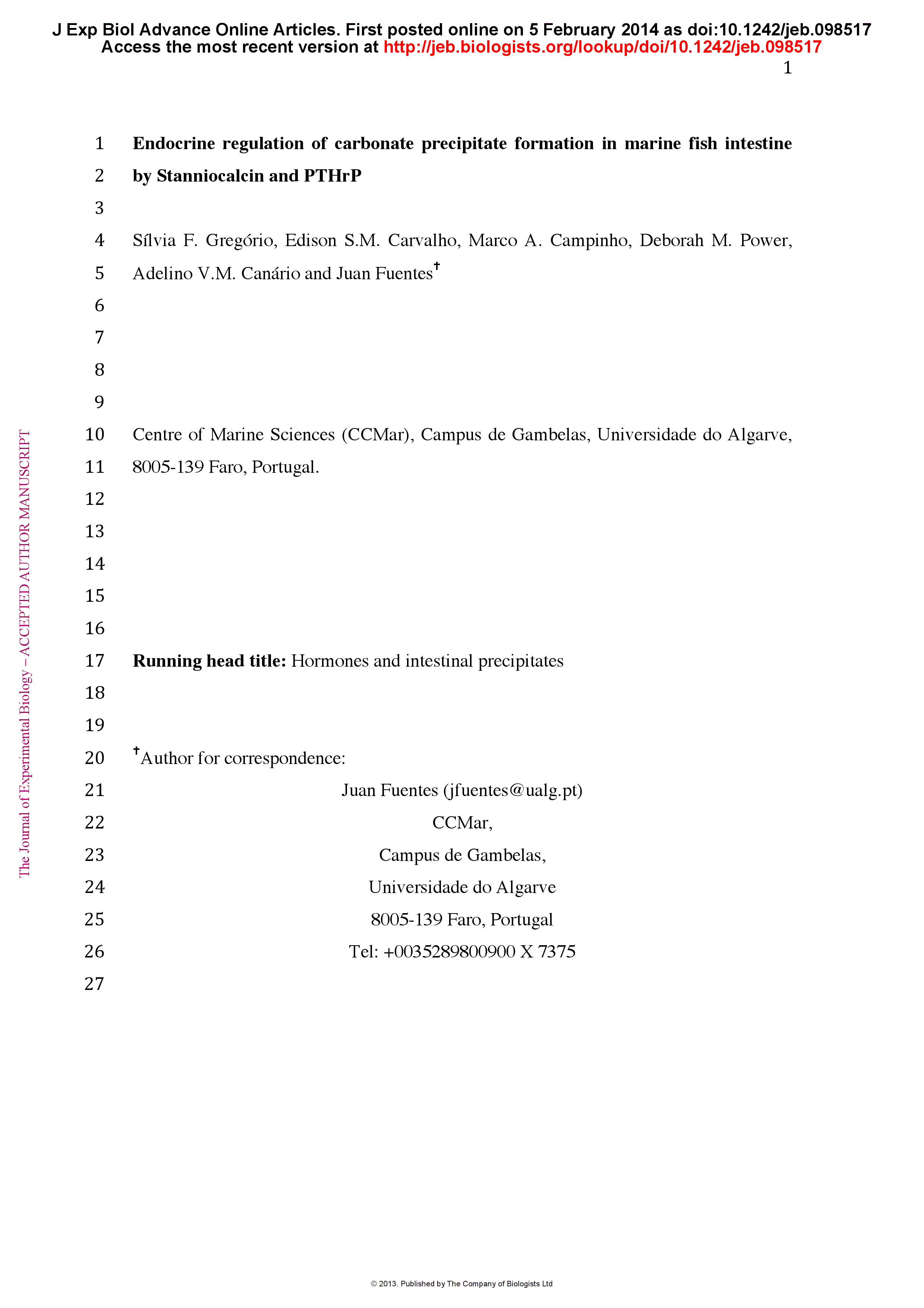Abstract
In marine fish, high epithelial bicarbonate secretion by the intestine generates luminal carbonate precipitates of divalent cations that play a key role in water and ion homeostasis. In vitro studies highlight the involvement of the calciotropic hormones PTHrP (Parathyroid hormone related protein) and stanniocalcin (STC) in the regulation of epithelial bicarbonate transport. The present study tests the hypothesis that calciotropic hormones have a regulatory role in carbonate precipitate formation in vivo. To test this hypothesis sea bream (Sparus aurata ) juveniles received single intraperitoneal injections of piscine PTHrP(1-34), the PTH/PTHrP receptor antagonist PTHrP(7-34), purified sea bream STC or were passively immunized with polyclonal rabbit antisera raised against sea bream STC (STCAb). Endocrine effects on the expression of the basolateral sodium bicarbonate co-transporter (Slc4a4.A), the apical anion exchangers (Slc26a6.A and Slc26a3.B) and the V-type proton pump beta subunit (Atp6v1b) in the anterior intestine were evaluated. In keeping with their calciotropic nature the hypocalcemic factors PTHrP(7-34) and STC up-regulated gene expression of all transporters. In contrast, the hypercalcemic factor PTHrP(1-34) and STC antibodies down-regulated transporters involved in the bicarbonate secretion cascade. Changes in intestine luminal precipitate contents provoked by calcaemic endocrine factors validated these results. 24 hours post-injection either PTHrP(1-34) or immunization with STCAb reduced the content of carbonate precipitates in the intestine of the sea bream. In contrast, the PTH/PTHrP receptor antagonist PTHrP(7-34) increased not only the precipitated fraction, but also the concentration of HCO3- equivalents in the intestinal fluid. These results confirm the hypothesis that calciotropic hormones have a regulatory role in carbonate precipitate formation in vivo in the intestine of marine fish. Furthermore, they illustrate for the first time in fish the counter-acting effect of PTHrP and STC and reveal an unexpected contribution of calcemic factors to acid-base balance.








